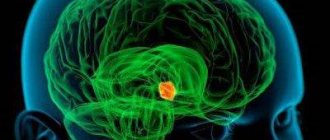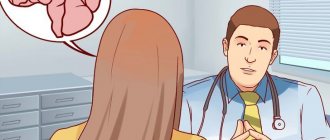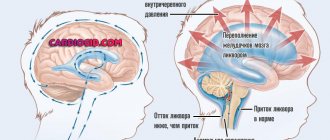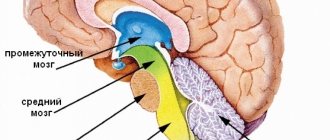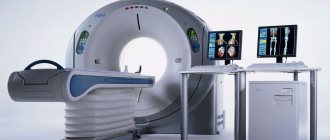Data
- Delirium tremens occurs in connection with the cessation of alcohol intake in alcoholics .
- Typically, an affected person will experience shaking , sweating , restlessness, confusion, seizures and hallucinations.
- Causes swelling of the brain, which is a life-threatening condition.
- Treated with large doses of sleeping pills.
- It is important to get enough B vitamins, as they prevent this process, and their deficiency leads to the development of Wernicke-Korsakoff syndrome.
Forms
Alcoholic delirium, according to the degree of consequences, is divided into classic and severe, each of which has its own characteristics:
- Classic alcoholic delirium. Begins to develop at the peak of withdrawal syndrome. Lasts three to five days, in rare cases seven to ten. The attack ends in the form of apathy and decreased emotional background.
- Severe alcoholic delirium. Occurs against the background of a weakened body. Has a poor prognosis. It can develop into alcoholic encephalopathy Gaye-Wernicke (damage to the hypothalamus) and cause organic defects.
- Endocrinologist - who is he and what does he treat? An endocrinologist will help with diseases of the endocrine system
- Loperamide - instructions for use for children and adults. Loperamide prices
- Pain in the left hypochondrium
Symptoms of delirium tremens
- Delirium usually occurs after particularly long and powerful binges.
- As a rule, delirium occurs 2-4 hours after you stop drinking. It begins with irritability, sleep disturbances, anxiety, and nightmares.
- Illusions and hallucinations arise. The patient will say that he sees insects or small animals. Sufferers are often terrified and can actually feel animals on their bodies. The person is disoriented in time, place and situation. He sweats , has palpitations , tremors , and sometimes has convulsions and epileptic seizures . The attacks themselves can be dangerous. In severe forms of delirium, circulatory problems and cardiac arrest may occur.
How does delirium tremens manifest in men and women?
Delirium tremens in alcoholics occurs in parallel with somatoneurological disorders inherent in withdrawal syndrome. The first signs of withdrawal are tremors, nausea, migraines, convulsions, muscle aches, and heart pain. Characterized by hyperthermia up to 37–38.5°C and arterial hypertension up to 180/110 mm Hg. Art. The “squirrel” itself develops progressively:
- Stage I (early delirium).
The first symptoms of delirium tremens: motor overexcitation, impaired ability to navigate in place and time, severe headaches. The man looks worried and nervous. Hallucinations of early delirium are short-lived; the patient feels the line between reality and delirium.
- Stage II (acute delirium).
Visual, auditory, and tactile hallucinations are increasing—more often, patients with delirium tremens see devils (or other supernatural creatures) and hear voices in their heads. It is difficult for an alcoholic to determine the boundary between real and imagined. Signs of delusion appear (persecution mania, paranoia, unreasonable fears), behavior becomes inappropriate. Psychomotor agitation and affective disorders increase. The pulse is frequent, accompanied by shortness of breath and increased sweating.
- Stage III (severe delirium tremens).
The last stage of delirium is characterized by all the main symptoms of delirium tremens, but with more severe vegetative manifestations. Overexcitation first becomes peak (up to a state in which the patient can harm himself and others). Then the person suddenly calms down, becomes drowsy, and after opening his eyes, he fixes his gaze for more than 10 seconds. There is a depression of consciousness from stupor to a coma, which is a symptom of cerebral edema.
Article on the topic: What to do if a person has delirium tremens from alcohol - a scheme of actions.
Diagnostics
If a person feels unwell a couple of hours after quitting a binge, he should go to the hospital (call an ambulance). The diagnosis of delirium tremens is confirmed by doctors based on external symptoms and the results of a mental status test (it is always lowered in delirium tremens):
| Points for correct execution | Task for a patient with suspected delirium tremens |
| 5 | Name the year, day of the week, month. |
| 5 | Name the location (country, city, house address). |
| 3 | They say three words with a pause of 1 second and ask to repeat. |
| 5 | Perform simple subtraction (for example, “100 – 7”). |
| 3 | They are asked to repeat 3 words from task No. 3. |
| 2 | They point to objects in the room and ask to name them. |
| 1 | They ask you to name 3 favorite books. |
| 3 | They ask you to fold the paper in half and place it on the floor. |
| 1 | Write a command on paper (for example, “close your eyes”), ask the patient to read and carry out what was written. |
| 1 | Dictate a proposal to the patient and tell him to write it on paper. |
| 1 | Draw any shape in the air with your hand and ask the patient to repeat. |
The norm is more than 29 points. With a lower level, two pathologies are possible - delirium delirium or dementia. To clarify, a differential diagnosis is carried out (symptoms that are not characteristic of delirium tremens are excluded - impaired personal perception, autoagnosia, parkinsonian syndrome).
Dosage of drugs
- Intravenous administration and titration lead to the desired result.
- The dosage should be so that the patient sleeps.
- The required total dose of the drug may vary widely.
- Haloperidol or another antipsychotic may be indicated in exceptional cases, as an addition to benzodiazepines.
- Antipsychotics are recommended not only because they lower the seizure threshold, but because they mask withdrawal symptoms.
- Always thiamine (vitamin B1 = thiamine 25 mg/ml) during hospitalization to prevent encephalopathy. Thiamine 100-200 mg intravenously slowly, then 50-100 mg per day.
- Magnesium can be given to all patients with normal renal function.
- In severe forms of delirium tremens, temperature must be measured, pulse and blood pressure are recorded regularly due to the danger of hypotension and hyperthermia.
- Correction of electrolyte and water imbalances with the help of droppers every 7-8 hours.
Complications and consequences
If alcoholics drink themselves to the point of delirium tremens, then after the seizure is over they will not be healthy. Delirium causes diseases:
- Alcoholic cardiomyopathy.
This consequence after delirium is observed in 25% of patients. Cardiomyopathy is dangerous, as in 5% of cases it causes death in patients.
- Liver failure.
Develops in 58% of cases of chronic alcoholism of the 2nd stage. Delirium tremens always provokes an exacerbation, which is very painful. The inverse relationship is also characteristic - the presence of liver disease increases the risk of delirium and subsequent coma by 3 times.
- Brain swelling.
The most common cause of death in severe delirium. If a patient with cerebral edema can be pumped out, he will require a long recovery due to impaired mental activity. The likelihood of disability is increased.
- Rhabdomyolysis.
Represents necrosis of muscle tissue. The prognosis is poor - the patient may die due to progressive hyperkalemia or renal failure.
Consequences of delirium tremens
Mortality rate is approximately 15%. But today this figure has dropped by several percent among patients seeking medical help. The real death toll, however, is likely slightly higher as not all people were hospitalized.
Most alcoholic delirium is a short-term condition. More than 80% goes away within three days if treated correctly. Some may have symptoms for a longer period of time. In very rare cases, symptoms may last for 4-5 weeks.
More than a third of people who experience delirium tremens will be dead within 8 years from alcohol-related illnesses or accidents.
Who is susceptible to the syndrome
Mental disorders characteristic of delirium tremens occur in individuals who, in their addiction to alcoholic beverages, have reached the second or third stage of alcoholism. More often this happens after 5-6 years of diligent drinking of strong drinks. Women turn into alcoholics much faster than men, so visions begin to visit them after 3 years.
Statistics show that people over 40 years of age are susceptible to delirium tremens. By this point, life has managed to beat the alcoholic pretty hard, weakening the psyche. Other risk groups include the following categories of people:
- survivors of inflammatory processes in the central nervous system (encephalitis, meningitis);
- had traumatic brain injuries;
- people who have previously had sporadic hallucinations;
- having chronic diseases in the acute phase.
- Choux pastry: recipes
- Chicken nuggets: homemade recipes
- Treatment of fungus on the big toe: remedies for onychomycosis
How to avoid this condition
When an alcoholic stops drinking, it is very important that any withdrawal symptoms are treated with certain types of anti-anxiety medications. Partly to mitigate this period of time for the sufferer, but also to prevent brain damage that could eventually pave the way for delirium tremens.
A healthy diet, vitamins and minerals are probably also important. However, patients simply do not comply with these recommendations.
At the first manifestations of delirium tremens, consult a narcologist . He has cleansed the body after binge drinking and will select a further treatment regimen and coding .
Treatment of delirium
Medical assistance for delirium tremens
Many doctors argue about whether treatment helps with delirium tremens, opinions are equally divided. Basically, it is almost impossible to completely rid an experienced alcoholic of delirium tremens. There is an option that treatment will simply alleviate his condition and prevent relapse. Delirium or delirium tremens is not a disease, but the consequences of many years of drinking alcohol.
The exit from this state must be gradual. Treatment is complex and depends on the person’s condition. At first, doctors try to remove nervous tension and stabilize sleep, as it is healing. Treatment then involves removing any remaining alcohol toxins from the body. After this, they get rid of hypovitaminosis and restore the water-salt balance of the body. Treatment of delirium tremens occurs with the help of tranquilizers and sedatives. After this, the psychosis passes.
Consequences
The consequences of delirium tremens are severe - it affects all systems of the body. The liver, kidneys, heart and brain are most affected. Possible consequences are:
- deterioration of condition;
- increased blood pressure, body temperature;
- dehydration, irregular heartbeat, loss of motor function;
- chills, sweating, yellowing of the whites of the eyes, pale or red skin;
- selective amnesia;
- withdrawal syndrome;
- intoxication, fatty liver disease;
- pinpoint hemorrhages in the brain;
- severe alcoholic psychosis.
Full-blown delirium
In the second stage, the symptoms are more pronounced. Self-medication is strictly prohibited, and the patient himself must be forcibly taken to a medical institution. In this case, hallucinations are observed not only of a visual nature, but also auditory and tactile.
In the understanding of an alcoholic, a picture arises that they want to harm him and even kill him, which significantly increases the stage of aggressiveness. He mistakes ordinary objects for monsters, which causes a certain specific behavior. The patient has the feeling that there is a foreign object in the mouth that cannot be removed, which leads to unusual behavior.
The danger is that a person completely loses control over himself and is unable to take responsibility for his actions, which, in most cases, are dangerous to others. The connection with reality is practically lost, which is associated with a large number of hallucinations. At this stage, the stage of psychosis lasts no more than two days, but other specific reactions are possible. The presence of pathologies in an alcoholic plays a major role. Then the third stage begins.
Aggressive (life threatening)
At this stage there is a certain danger to life. There is a complete lack of reactions to events in the outside world. There are convulsions, as well as dilated pupils. This is the active phase of psychosis, which can last up to 5 days. There is a threat of cerebral edema, which can lead to a coma. Failures and irreversible changes occur in the functioning of internal organs.
Much depends on how quickly the patient receives help. Any delay can lead to a fatal result. In this situation, two variants of the pathological condition are possible:
- complete cure;
- death.
In some patients, unfortunately, there is another variant of the situation. This is a cure, but with partial damage to the psyche and the functioning of some internal organs. This, unfortunately, makes a person disabled for life.
Rehabilitation of alcohol addicts
Possible complications
Alcoholic delirium always leaves consequences and complications, especially if it is not treated or if you try to cope on your own without medical intervention. The saddest outcome of delirium tremens is death – it accounts for 5-10% of all cases. A person who has reached the point of delirium tremens should expect the following possible health complications:
- brain disorders;
- acute renal failure;
- sleep and mental disorders intensify;
- constant instability of the nervous system, anxiety;
- weakened immune system;
- decreased hearing and vision.

